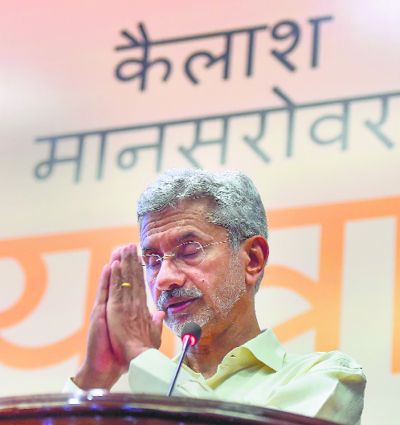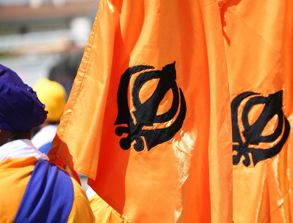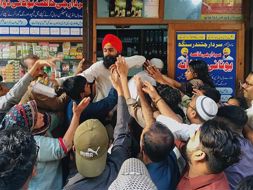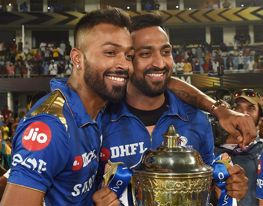S. Jaishankar
Book Title: The India Way: Strategies for an Uncertain World
Author: by S. Jaishankar.
Vivek Katju
As a professional diplomat, S Jaishankar gained enormous experience over a long and distinguished career from 1977 to 2018. He served in critical assignments as Foreign Secretary, and earlier as Ambassador to the United States and before that to China. In 2019, he made a spectacular entry into political life when he was inducted into the Cabinet as Minister of External Affairs. Soon after retiring from the Indian Foreign Service in 2018, Jaishankar joined the TATA group in a senior executive position. He has now made his debut as an author with his book, ‘The India Way’.

by S. Jaishankar.
HarperCollins.
Pages 226.
Rs 699
The book is a collection of eight essays on the evolving world order, and India’s relations with some of the countries and regions he served in, including Japan and ASEAN, China and the US. It also covers the importance of the Indo-Pacific region, the durability of nationalism, the Mahabharat as a fundamental source of Indian strategic thinking, and the evolution of India’s foreign policy. He concludes with thoughts on the post-pandemic world.
The essays are culled and refined from talks he gave over the past two years and seek “to develop an argumentation on contemporary politics”. Jaishankar urges that India should understand the great contemporary global transformation through disruptive changes, shed past inhibitions arising from history and ideology, pragmatically and pro-actively engage the world to articulate and pursue its interests. He focuses extensively on the rise of China and what that connotes for the world order, especially as the US’ “prioritising of national interests at the cost of international responsibilities is something that spans the ideological divide”. Jaishankar confidently asserts that the world is moving to multipolarity and will be “driven by balance of power”.
He also feels that the nature of power is itself changing, with technology and trade assuming critical roles. Much of all this is thought-provoking, but the writing meanders somewhat in a stream of consciousness manner. Also, theoretical propositions have to be tested with obvious ground realities. It would have been useful if he had also considered the deterrent power provided by the possession of nuclear weapons, as the North Korea example demonstrates. Nor does his assertion that middle powers and those regionally influential will have a great say “in their vicinity” take into account the interference in India’s neighbourhood, including in the south.
Jaishankar is at his best in delineating the various phases of India-China and India-Japan relations, as well as Indo-ASEAN ties. The narrative flows smoothly. His familiarity with these relationships gained through his diplomatic assignments has helped. Some of his assertions on the nature of the evolution of India-China relations over the past six years are currently being severely tested.
Jaishankar’s treatment of the growth of India’s foreign policy reveals an impatience with the cautious approach. He overlooks the great domestic challenges that the country faced not only in the first decade of Independence, but later too. He concedes though that the governments of the day acted with determination at times such as in 1971.
Nationalism is a force both within nations as well in interstate relations. Jaishankar is right in assessing that it is rising all over the world. The question is not of nationalism, but its use within polities and in dealing with the outside world. He also notes that the West should accept, in respect of the direction of changes in India, that “an elite created in a Western mould has now outlived its relevance”. The use of the word “created” shows a surprising ignorance of the processes and outcomes of the Indian Renaissance. In any event, the outside world has no role in deciding India’s electoral decisions and if comments come, they are not because of the background of the elites, but their actions.
The Mahabharat essay is well written but the attraction of a country’s culture and literature increases with its political and economic success. A narrative about the Mahabharat’s strategic significance cannot be artificially generated; it is not sustainable.
Through some aspects of this book, Jaishankar, not surprisingly, seeks to directly defend some aspects of the Modi government’s foreign policy. One such is an indirect reference to Modi’s Pakistan policy. He notes: “that India should offer a hand of friendship, but nevertheless respond strongly to acts of terror, is hardly a contradiction, except for those determined to see one.” Jaishankar naturally and correctly endorses the present policy of insisting that dialogue can resume only if Pakistani terror ends. The question though is: if the Manmohan Singh government had overlooked the lessons of history in respect of Pakistan, should the Modi government have gone down the same route?
The book is a very useful addition to India’s foreign policy literature both for the issues it covers and for revealing the worldview of the current Minister of External Affairs at a critical juncture in foreign policymaking.














